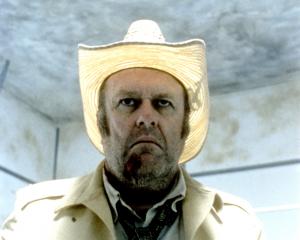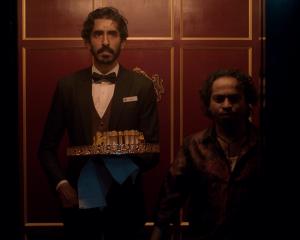A boy, a tiger and a big gamble. Can director Ang Lee's Life of Pi be profitable?, asks John Horn and Ben Fritz, of the Los Angeles Times.
Many people in Hollywood considered Life of Pi to be unfilmable.
Indeed, Director Ang Lee's $120-million adaptation of Yann Martel's 2001 book, which has sold 9 million copies worldwide, is precisely the kind of movie that many complain the big studios don't make anymore: an ambitious and highbrow creation that is not a sequel and is not based on a comic book or theme-park ride.
Marketing the movie is no easy task either. A boy's spiritual journey across the Pacific Ocean on a lifeboat with a tiger does not easily translate into a 30-second commercial.
''It's the biggest gamble I've ever taken,'' said Elizabeth Gabler, the veteran 20th Century Fox executive who oversaw the film.
There is a reason studios prefer to make movies such as Star Wars and Transformers. Eight of the top-10 films at the box office this year have been sequels or adaptations of child-friendly books such as The Hunger Games. Last year, all 10 fell into those two categories.
When show-business executives dare to invest in sophisticated material, they generally keep budgets low and make sure they have a recognisable star (such as Daniel Day-Lewis in Lincoln).
''I read the book shortly after it came out and I remember thinking, `This shouldn't be made into a movie','' Lee said.
''The artistic and the economic sides didn't meet. If you spend too much money, you have to be mainstream. But if you don't spend the money, you are not doing justice to the book.''
''I do think it's a specialised movie,'' Lee said of Life of Pi, using the industry jargon for an art-house film.
''But I hope it reaches out to the mainstream in some way.''
Life of Pi features a menagerie of animals, including a Bengal tiger and thousands of flying fish. To replicate Pacific storms, the production crew built a 6.4-million-litre water tank in Taiwan that generated capsizing waves.
The four animals stranded on the lifeboat with Pi, the only person to survive a cargo ship's sinking, are a zebra, an orangutan, a hyena and the tiger. To ensure that lead actor Suraj Sharma would not be ripped to shreds by his co-stars, the realistic animals are almost entirely computer-animated creations.
But that was the least of the film-making challenges. Life of Pi's journey to the big screen was nearly as miraculous as the technology behind it.
Gabler's Fox 2000 label acquired the movie rights soon after Life of Pi was published in 2001. But one film-maker after another proved unable to adapt the book, more moving spiritual allegory than compelling page page-turner.
Lara Croft Tomb Raider: The Cradle of Life and The Manchurian Candidate remake screenwriter Dean Georgaris do not manage to deliver a script. The Sixth Sense writer-director M. Night Shyamalan expressed interest in directing the movie in 2003 but ended up backing out.
Amelie director Jean-Pierre Jeunet in 2005 pitched his idea to make Life of Pi entirely with live animals. Fox estimated he would need some 300 days of filming, about four times as long as typical big-budget productions, and torpedoed his version.
The Oscar-winning Lee, whose diverse resume includes Brokeback Mountain, Hulk and Crouching Tiger, Hidden Dragon, came on to the project in 2008, drawn by its many challenges.
He arranged to shoot much of the picture in Taiwan and planned to use a mix of cutting-edge CGI and 3-D effects to bring the book's emotional intensity to the big screen.
Before filming was to commence in mid-2010, though, Fox pulled the plug on the production.
''It was too much money and too scary,'' Gabler said.
Determined to save the movie, Lee flew from Taiwan to Century City and showed top executives the screen test of Sharma (a novice picked from more than 3000 hopefuls) and plans for staging the ship's sinking. By the time the presentation was over, Fox's top brass had reversed their decision.












